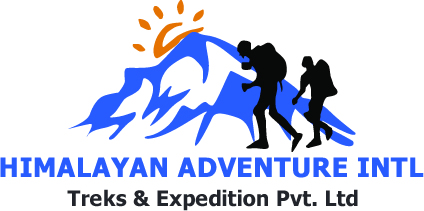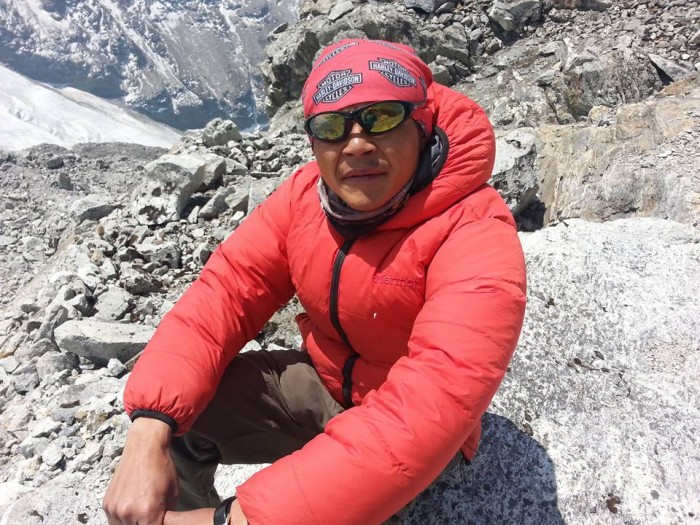Dhampus Peak with Dhaulagiri Circuit Trek: Complete Guide, Costs, and Safety Tips
The Dhampus Peak with Dhaulagiri Circuit Trek is one of the most thrilling and challenging trekking adventures in the Nepalese Himalayas. It offers unparalleled views of the Dhaulagiri range, including the majestic Dhaulagiri I (8,167m), the seventh-highest mountain in the world. This trek is the ultimate package for those seeking a combination of high-altitude trekking, peak climbing, and immersive Himalayan culture. This comprehensive guide will cover all aspects of the trek, including the trekking package cost, permit fees, food and accommodation costs, tips on dealing with acute mountain sickness (AMS), and safety measures for an unforgettable experience.
Trekking Package Cost: Dhampus Peak with Dhaulagiri Circuit
The Dhampus Peak and Dhaulagiri Circuit Trek typically last between 18-22 days, depending on acclimatization days and weather conditions. The package price generally includes permits, food, accommodation, guide, and porter services, but additional costs may apply for personal equipment, climbing gear, and insurance.
- Cost Range: $1,500 to $2,000 per person (subject to change based on season, group size, and the trek operator)
The package typically includes:
- Transportation: Pickup and drop-off from Kathmandu or Pokhara to the trek starting point.
- Accommodation: Basic teahouse and camping during the trek.
- Meals: Three meals a day (breakfast, lunch, dinner) during the trek.
- Guide and Porter Services: Experienced trekking guide and climbing guide for Dhampus Peak summit.
- Permits: All necessary permits for trekking and climbing.
- Climbing Equipment: Sometimes included, but check with your trek operator.
Permit Costs for Dhampus Peak and Dhaulagiri Circuit
Before embarking on the Dhampus Peak trek, climbers must secure several permits, which are, necessary for trekking and climbing in restricted areas.
Annapurna Conservation Area Project (ACAP) Permit: NPR 3,000 (approx. $25) for foreigners.
Dhaulagiri Restricted Area Permit: $50 per week for the first 10 days, then $7 per day thereafter.
Dhampus Peak Climbing Permit: Issued by the Nepal Mountaineering Association (NMA), this costs $70 in spring, $50 in autumn, and $35 in winter and summer.
These costs are standard but can vary slightly depending on official regulations and the season of the trek.
Food Cost During the Trek
The food options on the Dhampus Peak and Dhaulagiri Circuit trek are basic but nutritious, offering essential energy for long days of trekking. Costs can increase as you climb higher due to the logistical challenges of transporting food to remote areas.
- Cost of Meals $5 to $8 per meal at lower altitudes (up to $10 to $12 at higher altitudes).
Expect typical Nepali meals such as Dal Bhat (rice and lentil soup), noodles, Momos (dumplings), and vegetarian curries. Hot drinks like tea and coffee are available but can be pricier at higher elevations.
Accommodation Cost During the Trek
Accommodation along the Dhaulagiri Circuit and towards Dhampus Peak mainly consists of basic teahouses in villages or camping in more remote sections. Teahouse accommodations are usually simple rooms with twin beds, shared bathrooms, and limited facilities.
Teahouse Cost: $5 to $10 per night.
Camping (with crew): Included in most trek packages, though some companies may charge an additional fee for camping gear.
Dealing with Acute Mountain Sickness (AMS)
AMS is a common risk at high altitudes, especially when trekking and climbing above 3,500 meters. Symptoms can include headache, nausea, dizziness, fatigue, and shortness of breath. The Dhaulagiri Circuit and Dhampus Peak summit (6,012 meters) bring trekkers to extreme altitudes, so acclimatization is essential.
How to Prevent and Manage AMS:
Acclimatize Properly: Take rest days at high altitude points, especially above 3,500 meters.
Hydration: Drink plenty of water (3-4 liters, a day), to stay hydrated.
Avoid Alcohol and Smoking: These substances can exacerbate altitude sickness.
Climb High, Sleep Low: Ascend to higher altitudes during the day and return to a lower elevation to sleep.
Medication: Trekkers often take Diamox (Acetazolamide) to reduce AMS symptoms.
Recognize Early Symptoms: If symptoms persist, descend immediately to lower altitudes.
For serious cases, immediate evacuation is necessary, often by helicopter, which is why travel insurance that covers, high-altitude rescue is mandatory.
Safety Tips and Medical Preparation
Safety is paramount when trekking at high altitudes. Here are essential safety tips:
Physical Preparation: Train by hiking, cardio, and strength training months before the trek.
First Aid Kit: Carry basic first-aid items, including bandages, antiseptic, altitude sickness medication, and water purification tablets.
Climbing Gear: Make sure your crampons, harnesses, ropes, and boots are in top condition.
Insurance: Purchase insurance that covers up to 6,000 meters altitude and includes emergency evacuation.
Hiring a Climbing Guide and Porter Cost
Guides and porters are vital to a successful Dhampus Peak trek. They not only carry your gear but provide essential knowledge about the terrain, weather, and culture.
- Climbing Guide: Professional climbing guides cost approximately $35 to $45 per day. Their expertise is crucial for safely reaching the summit.
- Trekking Guide: A general trekking guide costs around $25 to $35 per day.
- Porter: Hiring a porter to carry your load costs around $15 to $25 per day.
Why You Need a Guide:
Expertise in Navigation: The trail can be dangerous, especially in bad weather, and guides help ensure you stay on the correct path.
Safety: A guide is trained in handling altitude sickness, weather changes, and emergencies.
Cultural Insights: A local guide offers rich cultural insights into the lifestyle and traditions of the Himalayan people.
Best Time to Summit Dhampus Peak
The best seasons to trek to Dhampus Peak and Dhaulagiri Circuit are spring (March to May) and autumn (September to November).
Spring: Warm days, rhododendron blooms, and clearer skies make for excellent trekking conditions. Temperatures at higher altitudes are moderate, and snow conditions are ideal for climbing.
Autumn: Post-monsoon skies are incredibly clear, offering breathtaking views of Dhaulagiri and surrounding peaks. The weather is stable, and temperatures are mild.
Winter (December to February) is extremely cold, with heavy snowfall making the trail dangerous. Summer (June to August) is monsoon season, making the trails slippery and prone to landslides.
The Dhampus Peak with Dhaulagiri Circuit Trek is a dream for avid trekkers and climbers looking for an exhilarating challenge in the heart of the Himalayas. While it requires proper physical preparation, acclimatization, and safety measures, the trek offers a rewarding experience filled with stunning landscapes, rich culture, and the triumph of summiting a Himalayan peak.
Whether hiring a guide, preparing for AMS, or calculating the total cost of the trip, this trek is a lifetime experience not to be missed. If you’re ready for the adventure of a lifetime, connect with Himalayan Adventure Intl Treks for a well-organized and safe expedition into the Dhaulagiri region.
By planning ahead and following safety protocols, you can conquer Dhampus Peak and enjoy the beauty of the Nepalese Himalayas to the fullest!

 Plan Your Trip Now
Plan Your Trip Now 


